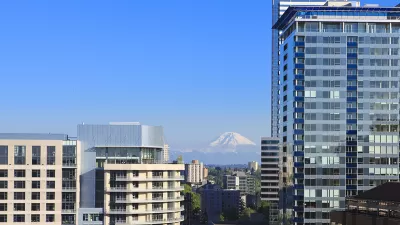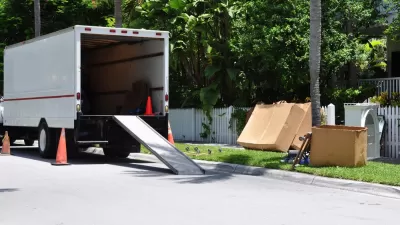In a special "Energy for Tomorrow" report, The New York Times looks at "clean city rankings" of energy efficiency and land use. But ranking cities is no easy task—"winners on one list may appears as sinners on another."
Experts in urban planning and related fields acknowledge that there are many ways to measure energy efficiency — or energy intensity, an idea that encompasses the quantity and quality of energy consumed — and that any assessment must include a degree of subjectivity.
San Francisco and Seattle, along with New York and Los Angeles, ranked among the top 10 in a 2008 Brookings Institution study of the 100 largest American cities with the lowest carbon emissions per resident. Seattle was the only one of these four cities that did not also finish in the top 10 in the latest annual ranking of energy efficiency compiled by the United States Environmental Protection Agency (EPA).
Indeed, I didn't have to look far to see examples of cities classified as energy profligate being top-rated on other lists.
Two inefficient American cities that Christopher Kennedy, a professor of civil engineering at the University of Toronto and the lead author on the [March 2015] megacities study points to are Houston, where downtown high-rises are hard to air-condition and where driving is essential for work or recreation, and San Jose, about which he said: "It’s all there. Just try to get to any of it," writes de Aenlle.
However, the aforementioned EPA rankings that didn't include Seattle in the top 10 did include Houston, although the list is limited to counting the number of "ENERGY STAR certified buildings in the past year." Land use was clearly not a consideration: Los Angeles and Atlanta were ranked #2 and #3 respectively.
As for sprawling San Jose, Brookings ranked it #7, ahead of San Francisco, in "per capita carbon emissions from transportation and residential energy use, 2005" [PDF], though it applied to the metro region, not the city.
As for New York City, it ranked the lowest in the megacities study of the world’s 27 largest metropolitan areas in energy, water use and solid waste production per capita. The New York Environment Report explored that miserable rating in more detail.
"It’s awfully hard to find one metric to declare who’s the winner," said Clinton Andrews, a professor of urban planning and policy development at Rutgers University, writes de Aenlle.
De Aenlle's conclusion did hit the mark though:
“If you stop burning coal [see "red alert" in Beijing] in inefficient power plants, you’re going to improve air quality, and if you do urban design so you can walk places, you’re going to be healthier and you won’t burn lots of gas,” said Clinton Andrews, a professor of urban planning and policy development at Rutgers University. “A lot of what improves energy efficiency improves quality of life.”
FULL STORY: The Cleanest Cities? It’s Not So Simple

Study: Maui’s Plan to Convert Vacation Rentals to Long-Term Housing Could Cause Nearly $1 Billion Economic Loss
The plan would reduce visitor accommodation by 25,% resulting in 1,900 jobs lost.

North Texas Transit Leaders Tout Benefits of TOD for Growing Region
At a summit focused on transit-oriented development, policymakers discussed how North Texas’ expanded light rail system can serve as a tool for economic growth.

Using Old Oil and Gas Wells for Green Energy Storage
Penn State researchers have found that repurposing abandoned oil and gas wells for geothermal-assisted compressed-air energy storage can boost efficiency, reduce environmental risks, and support clean energy and job transitions.

Santa Barbara Could Build Housing on County Land
County supervisors moved forward a proposal to build workforce housing on two county-owned parcels.

San Mateo Formally Opposes Freeway Project
The city council will send a letter to Caltrans urging the agency to reconsider a plan to expand the 101 through the city of San Mateo.

A Bronx Community Fights to Have its Voice Heard
After organizing and giving input for decades, the community around the Kingsbridge Armory might actually see it redeveloped — and they want to continue to have a say in how it goes.
Urban Design for Planners 1: Software Tools
This six-course series explores essential urban design concepts using open source software and equips planners with the tools they need to participate fully in the urban design process.
Planning for Universal Design
Learn the tools for implementing Universal Design in planning regulations.
Ascent Environmental
Borough of Carlisle
Institute for Housing and Urban Development Studies (IHS)
City of Grandview
Harvard GSD Executive Education
Toledo-Lucas County Plan Commissions
Salt Lake City
NYU Wagner Graduate School of Public Service





























